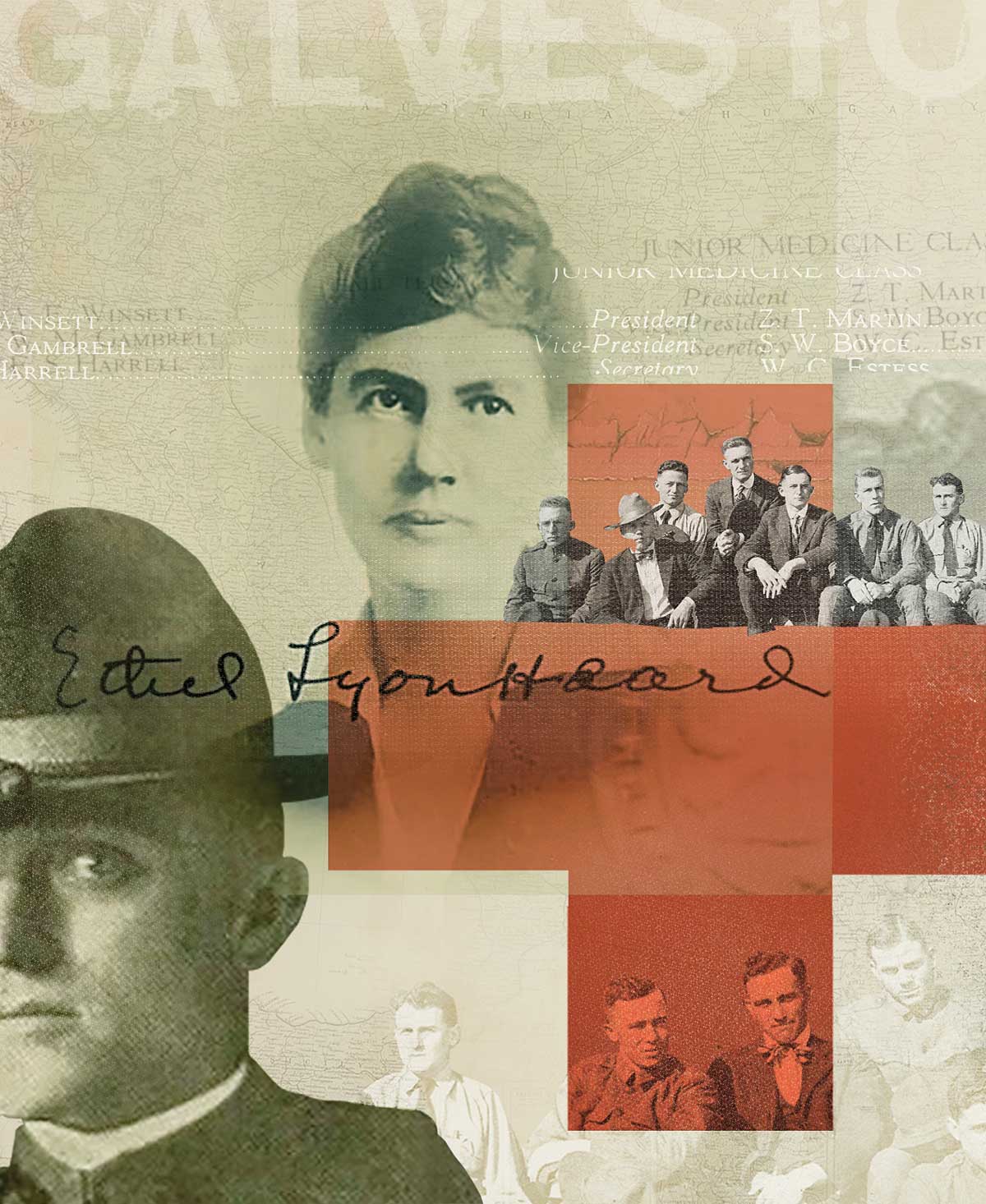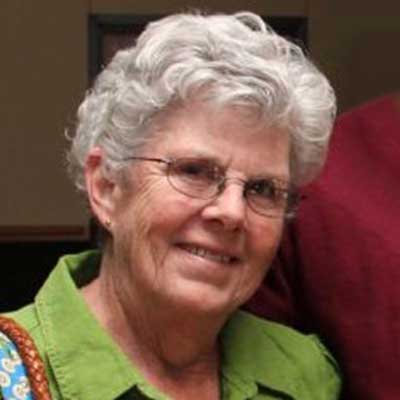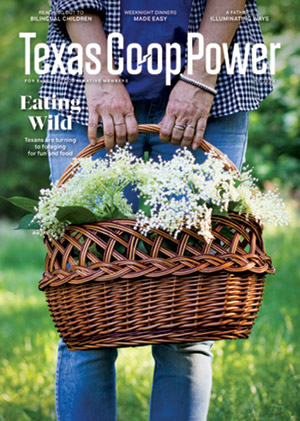When Dr. Ethel Lyon Heard returned to Texas after serving overseas with the Red Cross during World War I, she was holding tightly to the hand of a 3-year-old orphan from France named Jean Thibaut. After the child’s house was nearly destroyed by a mortar in 1918, he was discovered in a back room the following day and brought to the hospital where Lyon Heard worked.
Before the war, Lyon Heard taught classes in hygiene and child care at the University of Texas’ medical school in Galveston. Making space in her life for a child orphaned by war was just one of the countless acts of service and moments of bravery undertaken by UT faculty when the U.S. joined the war effort.
“These men and women sacrificed their lives and future professions by enlisting in the war effort in Europe,” says Dwayne Jones, director of the Galveston Historical Foundation. “The effects of the war redirected each life and altered the direction of health care forever.”
Known today as the University of Texas Medical Branch, the school started in October 1891 with 13 instructors, 23 students and one building.
The mettle of the school was tested right away when the devastating 1900 Galveston hurricane struck. Much of the city was destroyed, but Galveston doctors led recovery efforts.
When the U.S. formally entered World War I in 1917, new and catastrophic forms of combat—trench warfare and chemical and biological weapons—required increased medical care for troops. The situation worsened when the Spanish flu pandemic swept across the battlegrounds of Europe, killing thousands in just a few days. The American Expeditionary Forces sent out an urgent call for physicians, medical faculty and medical students to assist in the war effort.
The Council of National Defense urged medical students to stay in school and faculty to continue their critical teaching duties. But that didn’t stop some of UT’s medical personnel, who joined personnel from other leading U.S. universities in enlisting.
Lyon Heard’s husband, Dr. Allen George Heard, adjunct professor of pediatrics, joined the medical corps and was assigned to British forces in England. Wounded twice, he received two citations for “conspicuous bravery” in action on the battlefields of France.
Dr. Herbert Lee McNeil, an assistant professor of clinical pathology, was assigned to oversee a hospital with 4,000 patients, later serving on the front lines. Dr. Estill Lee Rice was business manager of the school’s medical magazine as a student. He served aboard the USS Nicholson, where he led a rescue mission to treat sailors injured in a German U-boat attack. Dr. Jess Autry Flautt was an instructor in obstetrics and gynecology before enlisting in the Navy Medical Corps on the day after the U.S. declared war. He rescued men from a ship loaded with explosives.
In November 2019, UTMB unveiled a Texas Historical Commission marker to honor the extraordinary contributions of eight members of the school’s faculty and 11 students who served during the war effort. Some of the physicians sacrificed their hard-earned professional positions, and in some cases their lives, to serve.
Dr. Ben Raimer, UTMB’s president, hopes the marker inspires today’s physicians. “The physicians honored on the new historical marker represent service before self, which is what we continue to instill in our students today.”



